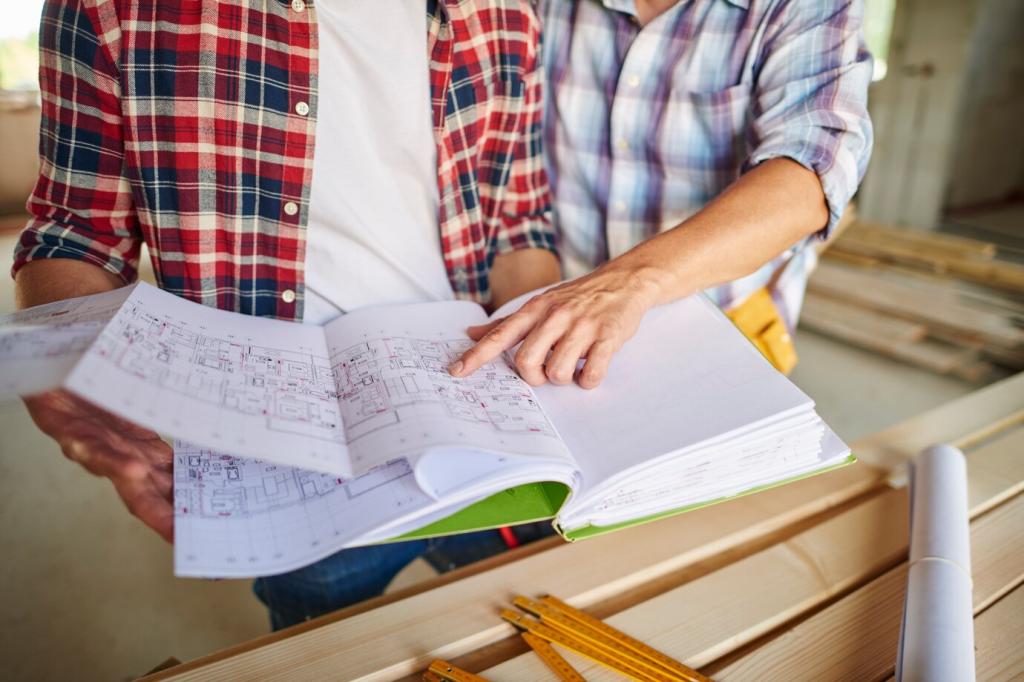Green Building Practices for Home Renovations
Sustainable Materials Selection

Using reclaimed and recycled resources is a cornerstone of sustainable renovation. These materials, salvaged from previous construction projects or processed from recycled content, minimize landfill waste and reduce the demand for new raw materials. Wood from old barns, bricks from deconstructed buildings, or recycled glass tiles not only add unique character to your home but also lessen your project’s environmental impact. Incorporating such elements ensures that the embodied energy—energy used in the production and transportation of materials—is not wasted. In addition, sourcing locally reclaimed materials further cuts down on transportation emissions, making your renovation even greener.
Energy Efficiency Upgrades
High-Performance Insulation and Windows
Proper insulation and high-quality windows are fundamental to minimizing unwanted heat loss and gain in your home. Upgrading to materials with superior insulating properties helps maintain a consistent indoor temperature, reducing the need for heating and cooling. Modern insulation products—from spray foam to recycled denim—offer increased performance while often being more environmentally friendly. Similarly, installing double or triple-glazed, low-emissivity windows reduces drafts, condensation, and energy transfer. These upgrades ensure that your renovated space is more comfortable, resilient against extreme temperatures, and more affordable to maintain.
Efficient Lighting and Appliance Choices
Replacing outdated lighting and appliances with energy-efficient alternatives can yield substantial savings over time. LED bulbs, for example, use a fraction of the power required by traditional incandescent lamps and have a much longer lifespan. Likewise, choosing ENERGY STAR-rated appliances—such as refrigerators, dishwashers, and washing machines—guarantees superior energy performance and lower greenhouse gas emissions. These steps contribute to a reduction in your household’s carbon footprint while supporting broader efforts toward clean, reliable power solutions. By systematically addressing lighting and appliance choices during renovation, you align your home with modern sustainability standards.
Smart Home Technologies and Controls
Smart home technologies are revolutionizing the way energy is managed in residential settings. Thermostats that adapt to your habits, motion-sensor lighting, and energy monitoring systems provide precise control over consumption. These innovations optimize utility usage, prevent unnecessary waste, and enhance the efficiency of both new and existing mechanical systems. Integrating these solutions within your renovation process not only promotes sustainability but also adds convenience and adaptability to your updated living spaces. As these technologies continue to evolve, their impact on reducing energy costs and supporting a greener lifestyle will only increase.

Low-Flow Plumbing Fixtures
Installing low-flow toilets, showerheads, and faucets is an effective way to dramatically reduce water usage without sacrificing performance. Modern designs use advanced aeration and pressure technologies to deliver satisfactory water flow while minimizing waste. By swapping traditional fixtures for high-efficiency alternatives, families can realize substantial savings on water bills and contribute to preserving local water supplies. These products are now widely available, stylish, and easy to incorporate into any renovation project, making them an accessible option for eco-conscious upgrades.
Rainwater Harvesting Systems
Collecting and storing rainwater offers an innovative solution to offset potable water use for gardening, landscaping, and even toilet flushing. Rainwater harvesting systems capture runoff from roofs and direct it into storage tanks for later use, reducing the demand on municipal supplies and lowering household utility costs. This approach diminishes stormwater runoff, which helps prevent erosion, flooding, and pollution in local waterways. When properly filtered and treated, stored water can even supplement indoor needs, providing additional resilience during periods of drought.
Drought-Tolerant and Native Landscaping
Outdoor water use significantly impacts residential water consumption. Transitioning to native plants and drought-tolerant landscaping reduces the need for regular irrigation and maintenance. Native species are adapted to the local climate and typically require fewer resources to thrive. This not only conserves water but also supports regional biodiversity and fosters habitats for pollinators and wildlife. Incorporating sustainable landscaping into your renovation plan contributes to a vibrant and environmentally responsible home exterior, harmonizing aesthetics with ecology.
